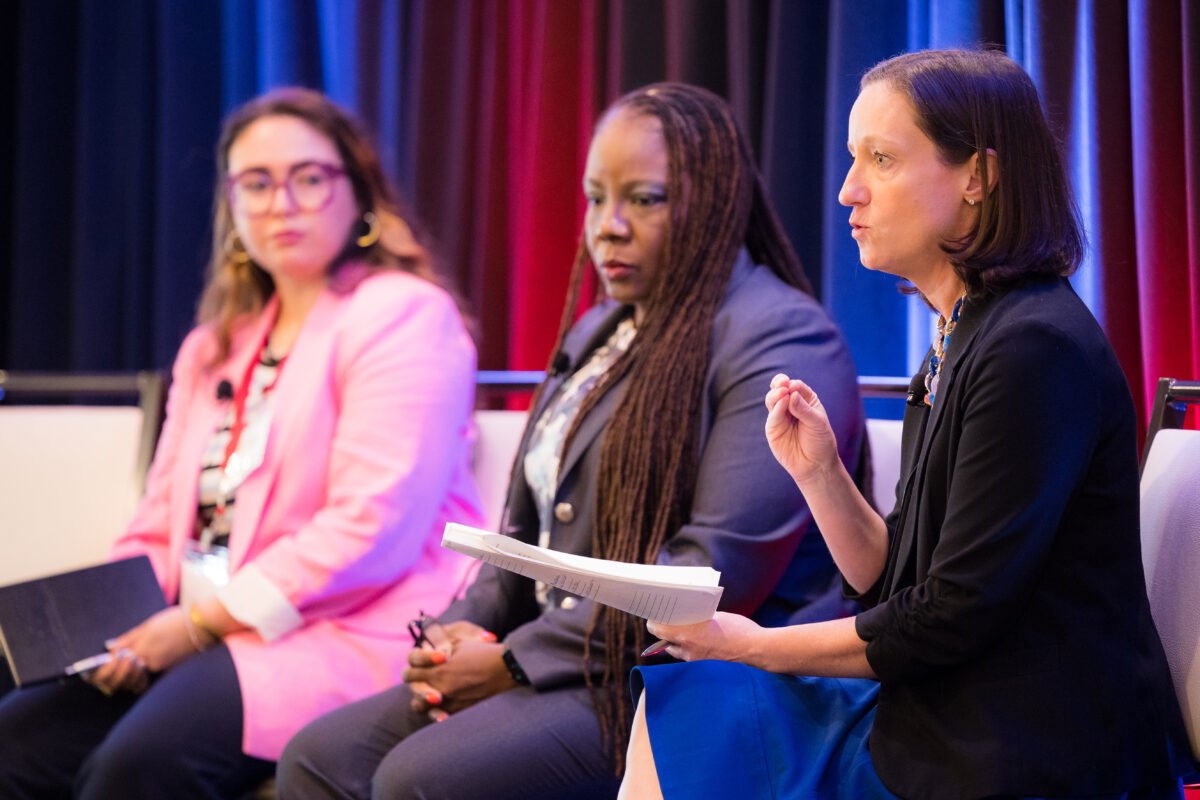Five Lessons for Turning Practice into Policy
Published Sep 19, 2023
Insights from IHEP’s Community of Practice to Policy to Increase Degree Completion
Higher education can be a pathway to economic security and social mobility – but only if a student earns a degree. Over 40 million Americans have earned some college credits but stopped short of receiving a credential. Between July 2020 and July 2021, 1.4 million more people joined the some college but no credential (SCNC) population, deepening existing inequities in educational outcomes and socio-economic mobility for first-generation students, adult students, students from low-income backgrounds and students of color.
To help more students complete degrees, IHEP partnered with 200 institutions in 23 states as part of the nationwide Degrees When Due initiative. Degrees When Due helped colleges reengage students who stopped out before earning a credential and build the capacity to conduct other proven degree-completion practices including degree auditing, reverse transfer and degree reclamation.
Building on the successes of Degrees When Due, IHEP convened the Community of Practice to Policy (COP2P), a learning cohort that included state teams from Alabama, California, New Jersey, and Ohio. COP2P helped practitioners – campus success coaches, student affairs leaders, enrollment managers, communications professionals and recruitment staff – advocate for resources to advance equitable degree completion within their institutions, organizations, and states.
Campus-based practitioners, drawing from their on-the-ground experience, are experts in strategies that support student success. “Practitioners focus on the work and often make a tremendous impact,” said Jenni Murphy, leader of COP2P’s California team, “but they are not often afforded the opportunity to share the lessons learned beyond their institution.” COP2P equipped these experts with tools to leverage their expertise to shape policy development.
To put these strategies into practice, each state team chose one degree-completion policy goal for the SCNC population within their state and designed an advocacy strategy to advance that goal. Alabama focused on removing financial barriers; Ohio chose expanding college compacts to improve affordability; California focused on creating adult-ready campuses; New Jersey championed policies to recognize credit for prior learning.
Team IHEP checked in with COP2P participants to hear their key takeaways for turning practice into policy.
1. Understand the Policy Landscape
To advance a policy goal, participants recognized the importance of understanding the policy landscape to then choose and deploy effective strategies. They assessed the political climate surrounding a policy goal and identified where support already exists. Then they mapped opportunities, including legislative sessions and institution-wide planning timelines, to advance their goals. “Timing is everything,” Murphy emphasized. “The spring and summer are when institutional leaders are doing project plans and budgets for the following academic year, so if opportunities are not already scheduled into the institutional plan, it makes it complicated to get the right people and resources in place to maximize the opportunity.”
2. Identify a High-Impact Policy Solution
Participants prioritized policy goals that will significantly impact students and influence relevant stakeholders. Maria Heidkamp, COP2P New Jersey team leader, shared how her team is working toward creating a consistent statewide policy for credit for prior learning. To do this, they are creating an inventory of existing agreements at New Jersey community colleges for awarding credits to individuals with industry-valued credentials. Streamlining and expanding credit for prior learning is aligned with the state’s educational and economic mobility goals.
3. Leverage Coalitions for Impact
Coalitions are vital to advocacy success. Participants explored the “who” and “what” of potential coalitions by considering these questions:
- Who shares our goal?
- Whose voices resonate most with the audiences we want to reach?
- What unique strengths do we bring to the advocacy goal? What are our gaps?
Each state considered carefully how shaping inclusive and representatives coalitions could strengthen their advocacy efforts and maximize impact.
4. Craft Compelling Narratives
Compelling narratives are evocative and can inspire change. COP2P participants recognized that highlighting student experiences alongside indisputable data can challenge dominant narratives. “Student voice is critical in bringing today’s realities to the forefront,” Murphy emphasized when describing her team’s work in California. “To do that, we need stories that bring new examples to light and reaffirm ongoing systemic challenges.”
Chandra Scott, who led Alabama’s COP2P team, shared how a compelling data-driven narrative led to a legislative win in her state. “The data-driven discussions amongst our team equipped us with a strong message that has resulted in the passing of SB 175 [providing] adults with some college, no degree with access to grant dollars that can lighten the financial burden of completing their postsecondary journey.” SB 175, first introduced in 2023, will provide grant awards (a maximum of $3,000 for universities and $1,500 for community colleges per academic semester) to for full-time adult learners to support their reenrollment and completion of their credentials.ii
5. Adapt to the Changing Policy Environment
Policy advocacy is a gradual process. COP2P participants recognized the need to be flexible and pivot strategies as legislative opportunities arise. And as the environment evolves, soliciting feedback from partners, policymakers, and the public is increasingly important.
“The COP2P webinar series provided confirmation that our team was on the right track,” Scott reflected. “There were times when we were unsure if this was the right time, right strategy, right ask; but having peer and content expert feedback gave us the momentum and confidence to present the case to our state legislature.”
These lessons are helping practitioners translate their expertise into meaningful policy advocacy that helps more students earn degrees and shapes a brighter future for all students.
Read IHEP’s 2022 report, Lighting the Path, for more insights about Degrees When Due.


